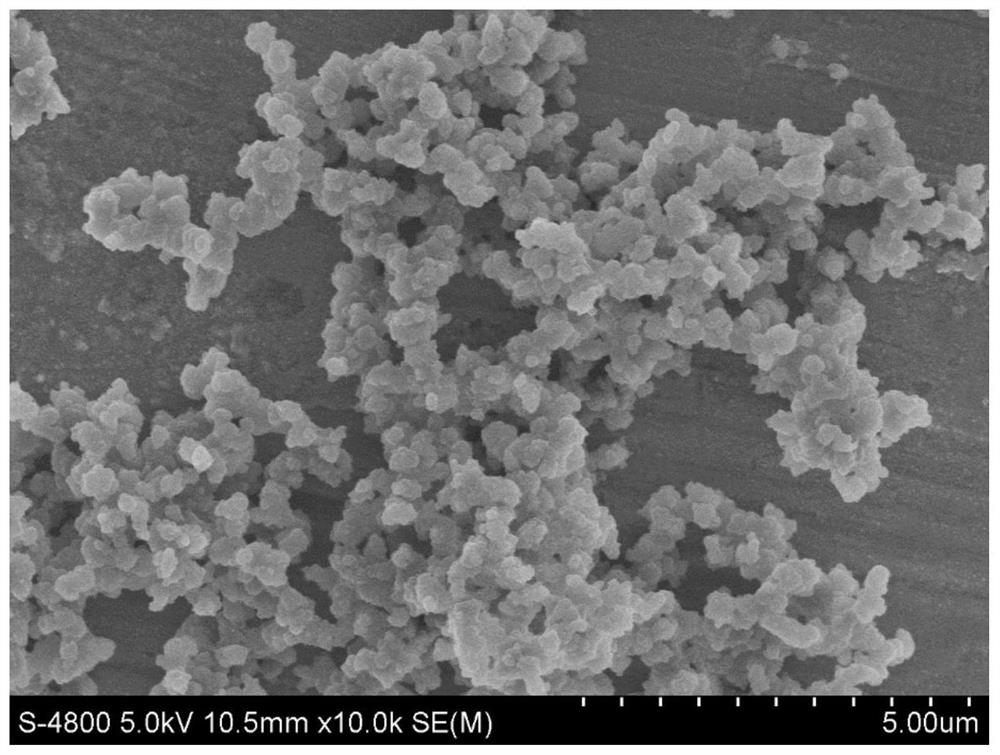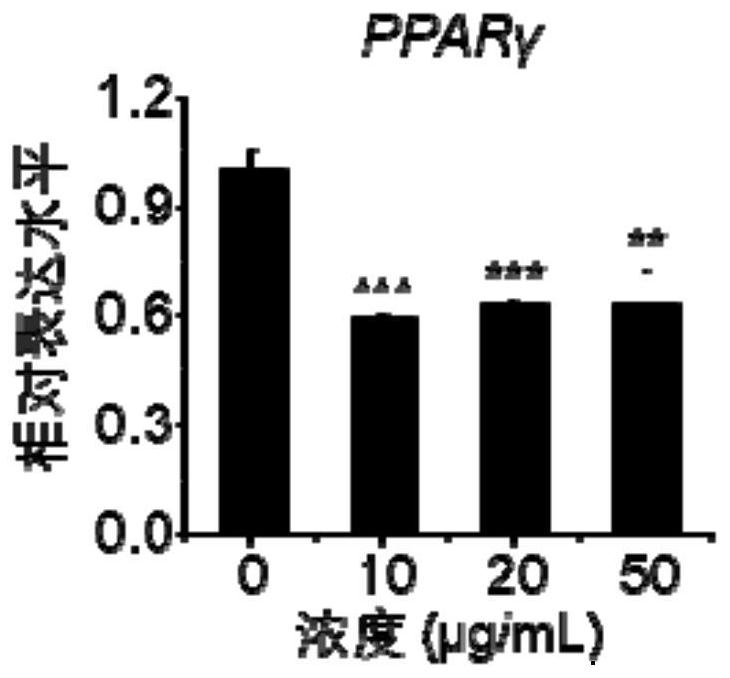A metal-catechin composite nanomaterial and its preparation method and application
A composite nanomaterial and catechin technology, which is applied in the field of metal-catechin composite nanomaterials and the preparation thereof, can solve the problems of complicated steps, difficult control of catechin release, etc., and achieves low cost, short cycle, and improved utilization. rate effect
- Summary
- Abstract
- Description
- Claims
- Application Information
AI Technical Summary
Problems solved by technology
Method used
Image
Examples
Embodiment 1
[0051] A preparation method of a metal-catechin composite nanomaterial, the specific steps are as follows:
[0052] (1) dissolve 3mmol (+)-catechin in 50mL water, obtain the (+)-catechin solution of 60mM; Dissolve 1mmol ferric chloride hexahydrate in 50mL water, obtain the ferric chloride hexahydrate solution of 20mM;
[0053] (2) mixing the (+)-catechin solution in step (1) with the ferric chloride hexahydrate solution, and stirring at 25° C. for 1 h to produce a dark brown precipitate;
[0054] (3) Washing the precipitate in step (2) with deionized water and alcohol, centrifuging and freeze-drying to obtain spherical nanoparticles, namely metal-catechin composite nanomaterials.
[0055] The morphology and characteristics of the metal-catechin composite nanomaterials prepared in this example were observed by scanning electron microscopy, and the scanning electron microscopy photos were as follows: figure 1 shown. Depend on figure 1 It can be seen that the morphology of the...
Embodiment 2
[0061] A preparation method of a metal-catechin composite nanomaterial, the specific steps are as follows:
[0062] (1) dissolve 3mmol (+)-catechin in 50mL water, obtain the (+)-catechin solution of 60mM; Dissolve 1mmol ferric chloride hexahydrate in 50mL water, obtain the ferric nitrate solution of 20mM;
[0063] (2) mixing the (+)-catechin solution in step (1) with the ferric nitrate solution, and stirring at 25° C. for 2 h to produce a dark brown precipitate;
[0064] (3) washing the precipitate in step (2) with deionized water and alcohol, centrifuging and freeze-drying to obtain spherical nanoparticles, i.e. metal-catechin composite nanomaterials;
[0065] The metal-catechin composite nanomaterial prepared above is applied to inhibit the adipogenic differentiation of human adipose-derived mesenchymal stem cells, and the steps are as follows:
[0066] (1) Weigh 10 mg of metal-catechin composite nanomaterials, disperse in 1 mL of phosphate buffered saline (PBS) after steri...
Embodiment 3
[0070] A preparation method of a metal-catechin composite nanomaterial, the specific steps are as follows:
[0071] (1) 1.5mmol (+)-catechin was dissolved in 50mL water to obtain 30mM (+)-catechin solution; 0.2mmol ferric nitrate was dissolved in 20mL water to obtain 10mM ferric nitrate solution;
[0072] (2) mixing the (+)-catechin solution in step (1) with the ferric nitrate solution, and stirring at 25°C for 3h to produce a dark brown precipitate;
[0073] (3) Washing the precipitate in step (2) with deionized water and alcohol, centrifuging and freeze-drying to obtain spherical nanoparticles, namely metal-catechin composite nanomaterials.
[0074] The metal-catechin composite nanomaterials prepared above are applied to inhibit the M1 polarization of THP-1 cells, and the steps are as follows:
[0075] (1) Weigh 50mg of metal-catechin composite nanomaterials, disperse in 10mL of phosphate buffered saline (PBS) after sterilization, to obtain metal-catechin composite nanomate...
PUM
| Property | Measurement | Unit |
|---|---|---|
| diameter | aaaaa | aaaaa |
| diameter | aaaaa | aaaaa |
Abstract
Description
Claims
Application Information
 Login to View More
Login to View More - R&D
- Intellectual Property
- Life Sciences
- Materials
- Tech Scout
- Unparalleled Data Quality
- Higher Quality Content
- 60% Fewer Hallucinations
Browse by: Latest US Patents, China's latest patents, Technical Efficacy Thesaurus, Application Domain, Technology Topic, Popular Technical Reports.
© 2025 PatSnap. All rights reserved.Legal|Privacy policy|Modern Slavery Act Transparency Statement|Sitemap|About US| Contact US: help@patsnap.com



